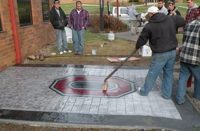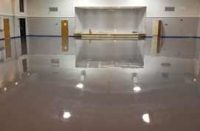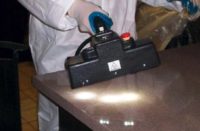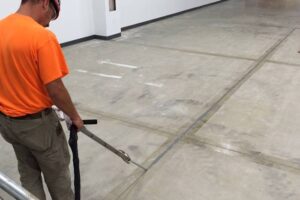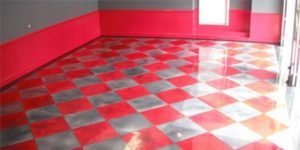Sealers are made from a variety of materials, each with different application and performance characteristics.
For example, acrylics typically have a lower material cost, are easy to apply and dry relatively quickly, all factors that make them cost effective, according to Bob Harris of the Decorative Concrete Institute.
However, he says they are not as durable or resistant to chemical and general wear as epoxies and urethanes. “Epoxies provide a good film, typically a minimum of 80 mils to 10 mils, forming good protection for the concrete substrate,” he says. “They can enhance the color dramatically.”
Epoxies have longer dry times and are less breathable than acrylics. “Epoxies also bring out the color and provide the shine that people who have decorative concrete prefer,” says Mike Hernandez of ReUse Concrete Sealing Specialists LLC. “Epoxies and polyurethanes work well for decorative concrete, although many people don’t want to use them because they are more expensive and more difficult to apply.”

Silane and siloxane penetrating sealers are easy to apply, breathable and offer good water resistance. Some resist stains, but generally even those do not resist aggressive oil stains. These materials do not enhance or alter the color of concrete.
Whatever the material, Hernandez says, “the higher percentage of solids in the sealer, the more durable it is.” He also believes durability is improved by applying the sealer in two thin coats 12 hours apart rather than in one heavy coat.
Another category of sealer is called “cure-andseal.” Clifford Platt of Vexcon Chemicals Inc. explains: “Cure-and-seals meet specific ASTM specifications for curing concrete. Also, because these products breathe, they will not trap moisture, so they can be applied to damp surfaces. This is an advantage over nonbreathable sealers, because typically there is going to be moisture in a slab of concrete, either in vapor form or from surface prep. The contractor does not have to wait until the slab is bone dry to apply these products, which saves time and money.”
While they do act as sealers, their primary function is to modify the cure. Contractors should not count on them to deliver long-term protection. “Cure-and-seals are basically coatings that are designed to keep the water from evaporating too quickly from freshly poured concrete,” Hernandez says. “They are almost always topical and short-lived. They burn off with exposure to the weather. The biggest problem is that homeowners hear the word ‘seal’ and believe that their concrete is truly sealed, which it isn’t. Cure-and-seals usually have lower solids than regular topical sealers and thus have a shorter life.”
Harris sums up: “A cure-and-seal is a curing agent for fresh concrete that conforms to a certain ASTM standard depending on the solid content. As a general rule, cureand- seals are styrene acrylics ,while sealers are just acrylics. They facilitate the cure while at the same time sealing. Typically after 30 days or so of curing you come back and apply another coat as a seal coat.”
